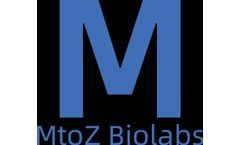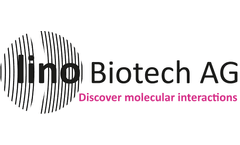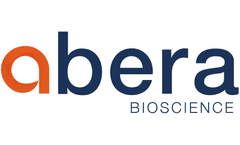Antigen Present Articles & Analysis
31 articles found
These studies aim to identify whether antibodies or T cells generated against a particular antigen react with similar proteins found in different tissues, which can lead to unintended effects and complications. ...
By co-administering chemokines like CCL19 or CCL21, researchers have improved antigen presentation and immune memory in several vaccine models. Emerging Research and Challenges Recent research into chemokines has expanded beyond traditional immunology, branching into neurobiology and regenerative medicine. ...
Encapsulating anticancer drugs within its lipid bilayer improves drug accumulation in target tissues while reducing toxicity to healthy cells.Immunomodulatory TherapyFunctionalized DSPE-PEG-Mannose nanoparticles can modulate immune responses by interacting with mannose receptors on immune cells, contributing to novel treatments for immune-related disorders.Cell Recognition and SeparationBy ...
In addition, there is a growing interest in the use of liposomes as vaccine adjuvants, leveraging their immunostimulatory properties to enhance antigen presentation and elicit robust immune responses. As our understanding of the immune system and disease pathology continues to deepen, liposomes are likely to play an increasingly important role in the development ...
In addition, FcRn can also bind and promote the degradation of IgG-antigen complex multimers, enhancing the antigen presentation of antigen-presenting cells. ...
CpG is a type of oligodeoxynucleotide that can be used as an immune adjuvant to stimulate the maturation and development of antigen-presenting cells. CpG can be encapsulated with PLGA using the emulsion evaporation method. The tumor cell membrane expresses a large number of tumor-related antigens, so the cell membrane can be used as an ...
Besides, they also can improve the antigen presenting function of dendritic cells, monocytes and macrophages, induce the proliferation of B cells, stimulate the immunoprotective activity of NK cells, and recruit T cells to the site of ODN administration. ...
On the one hand, in the presence of adjuvants, antigens are more likely to be efficiently processed and presented by antigen-presenting cells. ...
It has been reported that LNPs loaded with siRNA can be systematically delivered to the bone marrow, but passive diffusion still presents a challenge for bone-targeted drug delivery. Inspired by the fact that ligand substitution can achieve targeted LNP delivery, researchers at the University of Pennsylvania's Department of Bioengineering synthesized a series of lipids based on ...
In humans, MHC is referred to as human leukocyte antigen (HLA).Assessing Epitope Antigenicity and ImmunogenicityThe predicted immunogenicity of peptide epitopes can be analyzed through two in vivo methods: 1) in vivo immunogenicity analysis using HLA transgenic mice; 2) antigenicity testing using human ...
They facilitate the recognition and binding of immune cells, such as T cells, B cells, and antigen-presenting cells, during immune responses. Neural Development: Certain Ig-superfamily CADMs are essential for neuronal development, axon guidance, and synapse formation in the nervous system. ...
The oligosaccharides that are found on the A, B, and H antigens take place on the non-reducing ends of the oligosaccharide. The H antigen (that indicates an O blood type) serves as a precursor for both the A and B antigens. Thus, a person with blood type A will have both the A antigen and H antigen ...
It can inhibit DC differentiation and antigen presentation, induce B cell apoptosis, inhibit effector T cell proliferation, and play an immunosuppressive role. ...
DCs have several functions in the immune system depending on their level of maturity: mature DCs are mainly responsible for antigen presentation to T cells, giving DCs the common categorization of “antigen-presenting cells”. As such, they present antigens to T cells, which initiates a ...
Although sublingual IT (SLIT) is both safe and efficacious, the density of antigen-presenting cells is higher in other regions of the oral cavity and vestibule, which make them a potentially desirable target for IT. Objective: To present the concept of oral mucosal IT (OMIT) and to provide pilot data for this extended application of SLIT. ...
Abera’s vaccine delivery platform works as a plug-and-play system where known or novel antigens can be engineered onto our delivery platform to create effective, multivalent vaccines that are cost-effective and fast to produce. We actively work together with academia and industry to enable the use of our vaccine delivery platform in design and development of new vaccines. Many of these ...
In addition, oral administration of liposome-antigen formulations may enhance antigen delivery to antigen-presenting cells.Topical drug administrationLiposomes can reduce the side effects of topical drugs because they require only small doses when used as topical formulations. ...
Main Single-cell sequencing presents a tangible way to define cell types and states 7, but the tissue dissociation process leads to the loss of spatial context. ...
The following publication describes a study developing the ROP-TB antigen for both in vitro IGRA-based TB diagnosis, as well as the in vivo skin test for TB diagnosis in both humans and cattle. The advantages of the ROP-TB diagnosis are firstly distinguishing Mtb infection from BCG vaccination, and secondly, being suitable for industrial manufacture. Read the full article: ROP-TB Diagnosis ...
Truncated O-glycans (Tn, TF, and sialic acid Tn antigens), gangliosides (GD2, GD3, GM2, GM3, and rockulose-GM1), globular serine glycans (globo-H, SSEA-3, SSEA-4), Lewis antigens, and polysialic acid are the most well-studied TACAs. ...


















